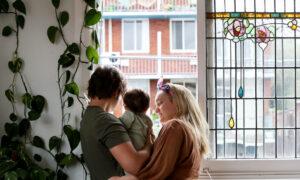Birth Rates in Japan and Australia Experience Sharp Decreases
Japan witnessed 727,000 births in 2023, marking the lowest number since 1899.
For the 15th consecutive year, Japan’s population has declined, leading Prime Minister Fumio Kishida to allocate up to 3.6 trillion yen (US$22.3 billion) annually to reverse this trend. However, an analyst suggests that this may not be sufficient.
Based on Japan’s Population Strategy Council, 744 out of 1,729 municipalities in Japan are at risk of disappearing by 2050 due to a loss of over 861,000 individuals.
In 2023, Japan recorded 727,000 births, the lowest since records began in 1899.
Takao urges the government to move beyond the traditional ‘standard family’ structure and adapt to evolving Japanese social values.
“An effective response to the crisis will require the Japanese government to adjust its policies to reflect changing societal norms and better support diverse family structures,” the analyst emphasized.
“The current government overlooks the importance of revitalizing society through various households and families. It should embrace diversity by providing equal family benefits to de facto relationships.”
Australia’s Births Lowest Since 2006
Advanced economies worldwide are grappling with declining birth rates due to cost-of-living pressures. Besides Japan, Australia is also experiencing a significant drop in births.
This decline is substantial compared to 315,200 births in 2021 following the post-lockdown surge.
“Australia has not witnessed such a sharp decline in births since the era of economic stagflation in the 1970s, coinciding with the widespread adoption of the contraceptive pill,” noted Terry Rawnsley, Urban Economist at KPMG.
“After the uncertainties of pandemic lockdowns, individuals who had postponed having children chose to start families. The historically low unemployment rate and the economic stimulus encouraged people to consider having children again.”
Amongst the capital cities, Sydney experienced the most significant drop of 8.6% to 60,860 from the 2019 levels.
Canberra remained steady, while only Tasmania observed an increase.
In the latest budget, Australia’s Labor government introduced an expanded paid parental leave scheme and increased investments in childcare education.
Treasurer Jim Chalmers highlighted that these measures aim to motivate Australians to have more children.





